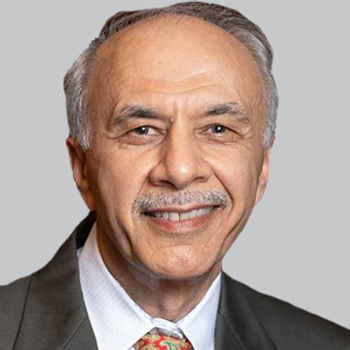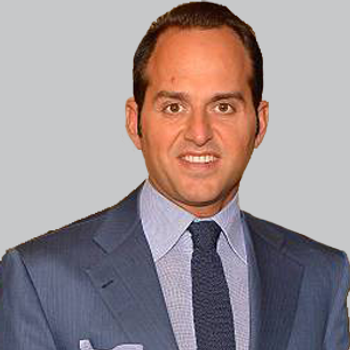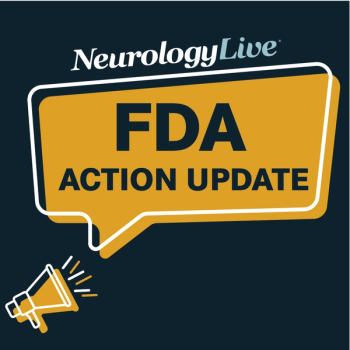
Treatment with neflamapimod was associated with statistically significantly higher functional dynamic connectivity, with almost half of the cohort experiencing a greater than 10% increase over time.

Marco Meglio, Assistant Managing Editor for NeurologyLive, has been with the team since October 2019. Follow him on Twitter @marcomeglio1 or email him at [email protected]

Treatment with neflamapimod was associated with statistically significantly higher functional dynamic connectivity, with almost half of the cohort experiencing a greater than 10% increase over time.

Amyloid clearance was achieved by 75% of participants who received remternetug at doses ranging from 700 to 2800 mg IV Q4Q by day 169.

Anastasia Vishnevetsky, MD, an immunology fellow at Brigham and Women’s Hospital, provided insight on the latest research initiatives in MOG-antibody associated disease, including the potential for the first FDA-approved therapy.

Investigators identified associations between several distance and area-related life-space measures with TUG performance, not NIHSS or modified Rankin scales scores.

Pitolisant will be assessed in 200 patients with idiopathic hypersomnia, using change in excessive daytime sleepiness as the primary end point.

Russell Cerejo, MD, vascular neurologist at Allegheny Health Network, discussed the ways basilar artery occlusions are identified and treated despite lack of consensus guidelines.

Statistically significant improvements in several quantitative test measures of episodic memory, attentiveness, and depressive emotional bias were observed in patients treated with clenbuterol and nadolol.

Over a 24-week treatment period, reldesemtiv failed to show a significant effect vs placebo on the primary end point of ALS Functional Scale-Revised, as well as other key secondary end points.

Similar to data reported at 35 weeks, patients on eplontersen continued to see consistent reductions in serum transthyretin concentration for up to 66 weeks of treatment.

In total, 302 pharmacodynamic changes due to CT1812 were identified, with 11 Alzheimer-related priority biomarkers altered in comparison with placebo.

Despite a pause in the trial due to the COVID-19 pandemic, patients who opted to continue treatment into the open-label extension demonstrated significant improvements in Parkinson disease dementia symptoms for up to 48 weeks.

Over a 6-month open-label extension period, mazindol ER was found to be safe, with patients demonstrating significant decreases in number of weekly cataplexy episodes and improvements in daytime sleepiness.

Foralumab, a fully human anti-CD3 monoclonal antibody, has had treatment effect demonstrated in patients with COVID-19 and with multiple sclerosis, as well as in healthy normal individuals.

The director of the Comprehensive Epilepsy Center at NYU Langone provided perspective on the advantages modified Atkins diets bring to patients with epilepsy and those considering epilepsy surgery.

In a phase 3 study, extended-release sodium oxybate demonstrated statistically significant and clinically meaningful results in excessive daytime sleepiness, clinician’s assessment of patient’s functioning, and reduction in cataplexy attacks.

Elaine Kingwell, PhD, senior research associate at University College London provided perspective on a study presented at the 2023 ACTRIMS Forum on HIV and multiple sclerosis.

Time to milestones such as invasive and noninvasive ventilation, speech-generating devices, and hospice care took significantly longer while on intravenous edaravone.

At the willingness to pay threshold of $200,000 per QALY gained, the estimated annual value for lecanemab was $35,678 and $37,351 from the payer and societal perspectives, respectively.

NurOwn, an autologous mesenchymal stromal cell approach for ALS, failed to meet its primary end point in a pivotal phase 3 trial, but showed promising results on less severe forms of the disease in subsequent analyses.

Over a 12-week treatment period, patients with Parkinson disease on light therapy demonstrated statistically significant improvements of 58% and 40% in lower and upper limb coordination and movement.

Neurology News Network for the week ending March 25, 2023. [WATCH TIME: 3 minutes]

Results of solriamfetol were similar when outcomes were examined in subgroups of concomitant antidepressant use, regardless of depression history, indicating that antidepressants did not affect the efficacy of the drug.

Mind Moments®, a podcast from NeurologyLive®, brings you an exclusive interview with Eric Zhou. [LISTEN TIME: 14 minutes]

Durability of treatment response on reachable workspace was observed among those who continued losmapimod throughout the 96-week period and those who switched from placebo.

In participants who received placebo during the parent studies, rapid improvements were observed as early as week 1 after switching to zilucoplan, and continued through week 12 of the extension period.

The committee all agreed that tofersen presents a favorable risk-benefit profile in this particularly challenging patient population.

After results indicated significant slowing of ALS disease progression, Coya noted it plans to file an IND with the FDA in the second half of 2023 for a potential clinical study thereafter.

If approved, ABBV-951 will become the first subcutaneous delivery of carbidopa/levodopa, often considered the standard of care for symptom management for patients with Parkinson disease.

The professor of neurology and pediatrics at University of Rochester Medical Center shared her thoughts on the 2023 MDA Clinical and Scientific Conference, and the progress made in the treatment of neuromuscular disorders.

Efgartigimod-treated patients consistently outperformed placebo regardless of concomitant medication, thymectomy status, and timing of diagnosis.